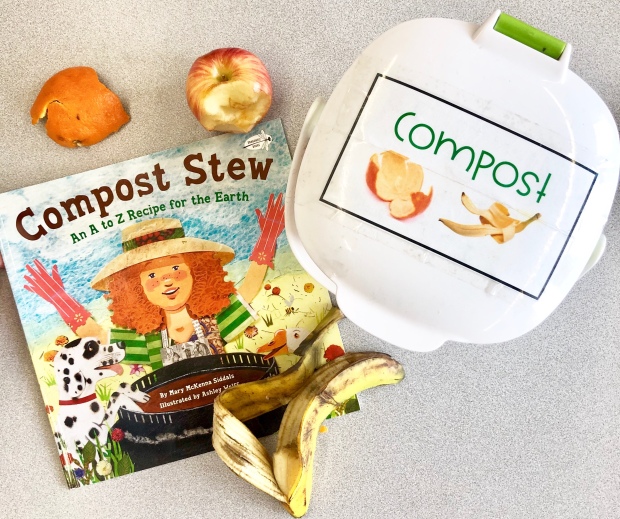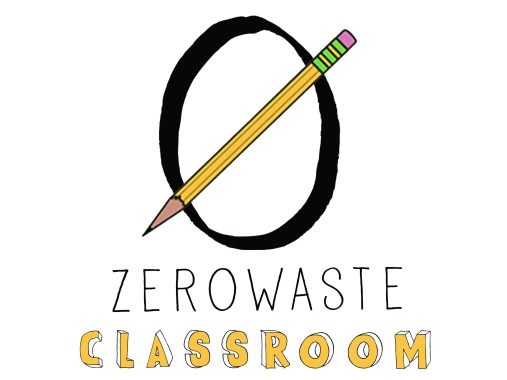The term “zero waste” can seem daunting- and conjure images of trendy hipster girls holding out mason jars with four year’s worth of trash crammed inside. The truth is, though, that there is really no such thing as zero waste- and the term only exists to remind us that we’re working TOWARD a circular system- not that we should be beating ourselves up every time trash enters our lives, as it inevitably does.
With that in mind- here are the 5 highest impact changes you can make in your classroom (or anywhere you work with kids in large groups!) to move towards this circular system where materials are consumed with consciousness and waste is kept to a minimum!
1. Washcloths Over Wipes

Classrooms tend to be hotbeds of germs- between the tendency of little ones to put EVERYTHING in their mouths, and the nature of being contained in a small space with 25+ kiddos for 7 hours a day, we KNOW germs are running wild over all our surfaces. To combat this, most teachers ask for anti-bacterial wipes on their supply lists, add them to donation wish lists, and even buy them with their own hard- earned cash! Depending on how often you wipe down your surfaces, your trash can could be full of these single- use wipes daily or weekly! Besides being trash after one use, the wipes are also dangerous for our immune systems- bacteria are constantly evolving and the more anti-bacterial products we use, the more anti-biotic resistant strains of super bugs will evolve. Plus, anti-bacterial products kill even the good bacteria around, and then the minute bad bacteria is reintroduced to the area, it can flourish.
Solution? Washcloths and all purpose spray! Most of the time, I wipe down tables (read: have my kids wipe down tables!) with a simple mixture of all purpose cleaner and water. This comes in a plastic bottle, but is so concentrated that I have had the same bottle for 3 years! When this is gone, I’ll be switching to using my trusty DIY spray that I use at home- vinegar and citrus cleaner. When there’s a bad batch of germs going around, I switch to bleach in the spray bottle, and I wipe everything instead of the little ones. This one switch has saved 50 or more plastic containers and hundreds of wipes each year from leaving our classroom in the trash!
2. Rethink Lamination
Teachers- please hear me out. I know it’s almost sacrilegious to a teacher to question the need to laminate materials, but I’m going to go out on a limb here and suggest that we may have taken it a bit far. I recently saw a flow chart titled “Should I laminate it” where every answer led to “Yes!” In some cases, laminating might be necessary, and might save you time and resources if you’re really going to print the same thing again and again year after year. But, many of us are so often updating our teaching materials and resources that we aren’t actually using the same stuff that long! I started noticing that I was throwing away a LOT of laminated materials because I’d found or made something better. I also noticed that a LOT of what I laminated wasn’t even being used by students! I was spending precious time, energy, and resources coating bulletin board letters, anchor charts, and reference materials that were just hanging on my wall, not even being handled by kiddos. What a waste- AND it created a terrible glare from the windows. What an easy thing to simply stop.
Now, when I think I want materials to last a long time, I glue them to the back of thin cardboard like cereal boxes that I ask parents to donate. Using a glue sponge is perfect for this- the paper doesn’t have little wrinkles from wet glue, and it actually sticks on there (unlike when you use a glue stick!) I have had some materials like this in use for years now, and they are still doing great! 

I haven’t stopped laminating completely- some things that are truly handled every day, all year, like my reader’s theater scripts, are still laminated. But I went from mindlessly coating everything paper in un-recyclable plastic to laminating 4 sheets of paper this year, and I’d call that a win!
3. Classroom Compost

Did you know that food waste is the single biggest occupant of landfills? Or that if the food rotting in the landfill were a country it would come in as the third (just behind the U.S. and China) largest contributor to global warming? Yikes.
I’m privileged to have city compost work with our school district, so composting in my classroom is simple- it goes in the bucket, we empty the bucket in the lunchroom compost every day, the city comes to pick up the bins every week.
But even if you aren’t quite that lucky- there are some fairly simple ways to compost at school. Send out a note to your parents, see if any of them have a home compost and if they’d be willing to take home a weekly bucket. Does your school have a garden? If so, can you get a big tumbler going out there, and use the compost in the garden so it comes full circle? Are there compost pick ups available in your area? Are there small farms or community gardens that would take it? Can you check an app like Share Waste to see if there’s anyone in your city who wants it? Can you start a vermi-compost (worm bin) to get kids invested in the process?
I know this may sound intimidating- but starting a compost and addressing the terrible amount of food waste could very well be the single biggest impact you could make!
4. Party Green
Most classrooms are going to have at least a few parties a year- celebrating holidays, birthdays, or a special earned treat. Almost always, most classrooms will also have a trash can full of single use plates, napkins, utensils, and cups afterward. Isn’t it a little strange that we’re at the point where the effort it takes to mine for oil, refine that oil, add chemicals and polymers, turn it into plastic, shape the plastic into a spoon, package and deliver that spoon to a store, drive to the store to buy it, and then use it once before throwing it away is LESS effort than it takes to just wash a spoon when you’re done with it?
A few years ago I bought 35 plates, cups, spoons and forks at IKEA. They’re plastic, and they came wrapped in plastic, but they have now saved at least 400 single use items from being bought and disposed of, and they have many more years of life in them. If you don’t want to go the new route, thrift stores often have great kids options for super cheap. It wouldn’t take long to build a class set!

After the parties, I usually ask a parent volunteer to take the dishes home and wash them in a dishwasher, but occasionally no one volunteers, and I spend 15 minutes after school washing them in my sink. Yep, it’s more work for a teacher who already has a to-do list a million miles long, but it’s way less effort and energy than the silliness of single use.
5. Recycle What You Can
There’s a reason this one is last- recycling is far from the magic green bullet it’s been marketed as- especially recycling plastic. Recycling is an energy and emissions intensive process that is far from sustainable, but it is better than just throwing things away.
So, take a good hard look at what’s in your classroom trash can. Some of those things can probably be recycled, but not in your regular recycling bin. Dried markers can be sent to Crayola Colorcycle to be recycled into fuel. Note- they won’t be made into new markers- plastic can only be down-cycled! Broken crayons that are really beyond usefulness can be turned into cute crafts or send to The Crayon Initiative. Plastic bags can be taken to your local grocery store for recycling- but first check with the manager to make sure that they ACTUALLY get picked up for recycling. One grocery store said they just throw them from the recycling bin into the trash. Ugh.
For other frequently trashed items like chip bags, applesauce pouches, or other miscellaneous items, check out terracycle.com. They have some boxes you buy, fill, and then ship back, but they also have some company sponsored programs that are free. Join the waitlist, collect your items, then ship them to Terracycle with the pre-paid shipping label they email you.

There you have it- 5 ways to cut down on your classroom waste! Some of them do require a little extra effort on the educator’s part. But when I think about the future of the little smiling faces I am lucky enough to get to work with each day, I know it’s worth the investment I’m making to model for them the importance of mindful use of resources. It’s really their world we’re living in, after all.


Great tips! I especially like the highlight of the waste plastic utensils use and the small effort it takes to wash normal utensils versus the process it takes to create products that are essentially made for the garbage!
LikeLike
Love these ideas! You mention that you sometimes use bleach … I have a great recipe that kills germs and you can use it ALL the time because it’s safe! I take an old plastic/glass spray bottle. Fill it about 1/4 full with isopropyl alcohol (the kind that they rub on your arm before you get a shot.) Fill with water and add a little dish soap (I use a teaspoon or two,) shake and Viola! You have a kid friendly, germ-free classroom!!!
LikeLike
Hundreds less plastic utensils now in waste stream, just from me alone, since reading your tips and hearing you speak. So very right!
LikeLike
Love the compost idea! It used to drive me crazy watching kids throw half apples out and we have chickens we could feed but my brain couldn’t think of a way to collect them.
Thank you!!
LikeLike